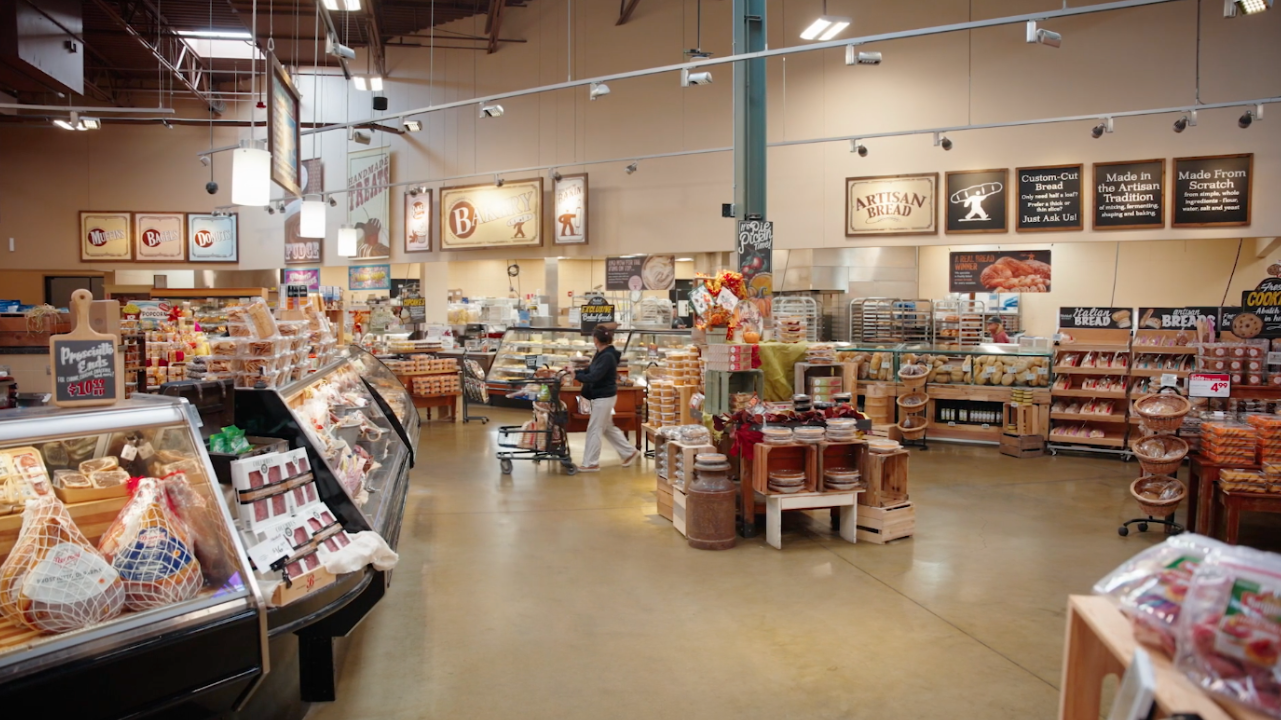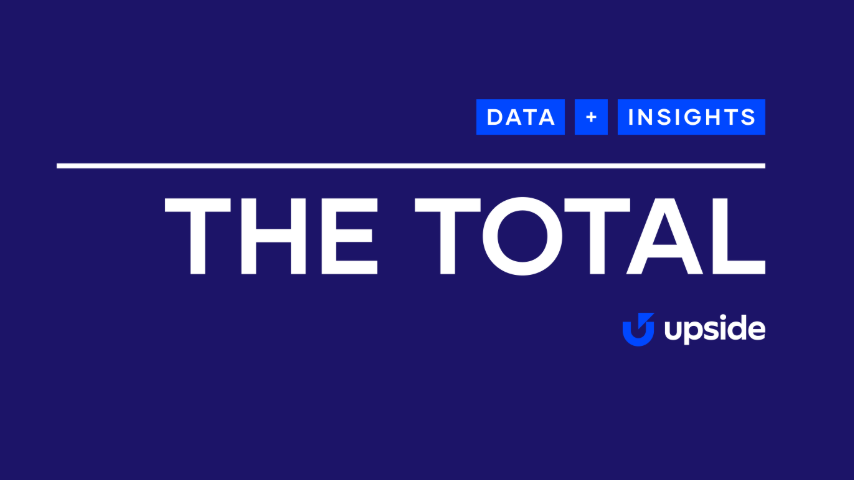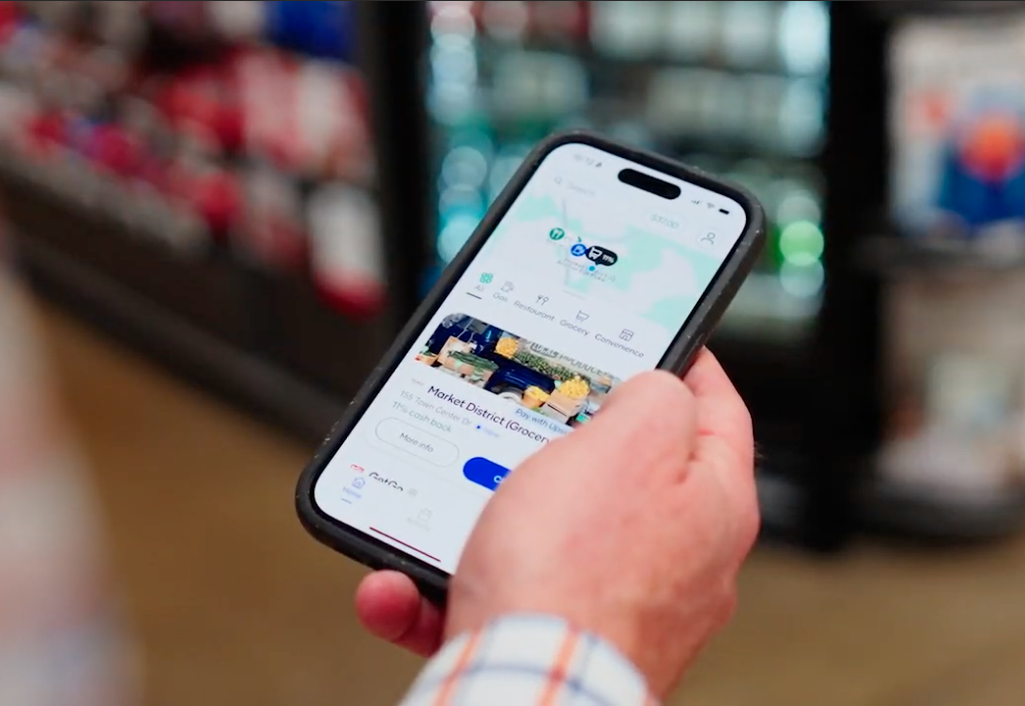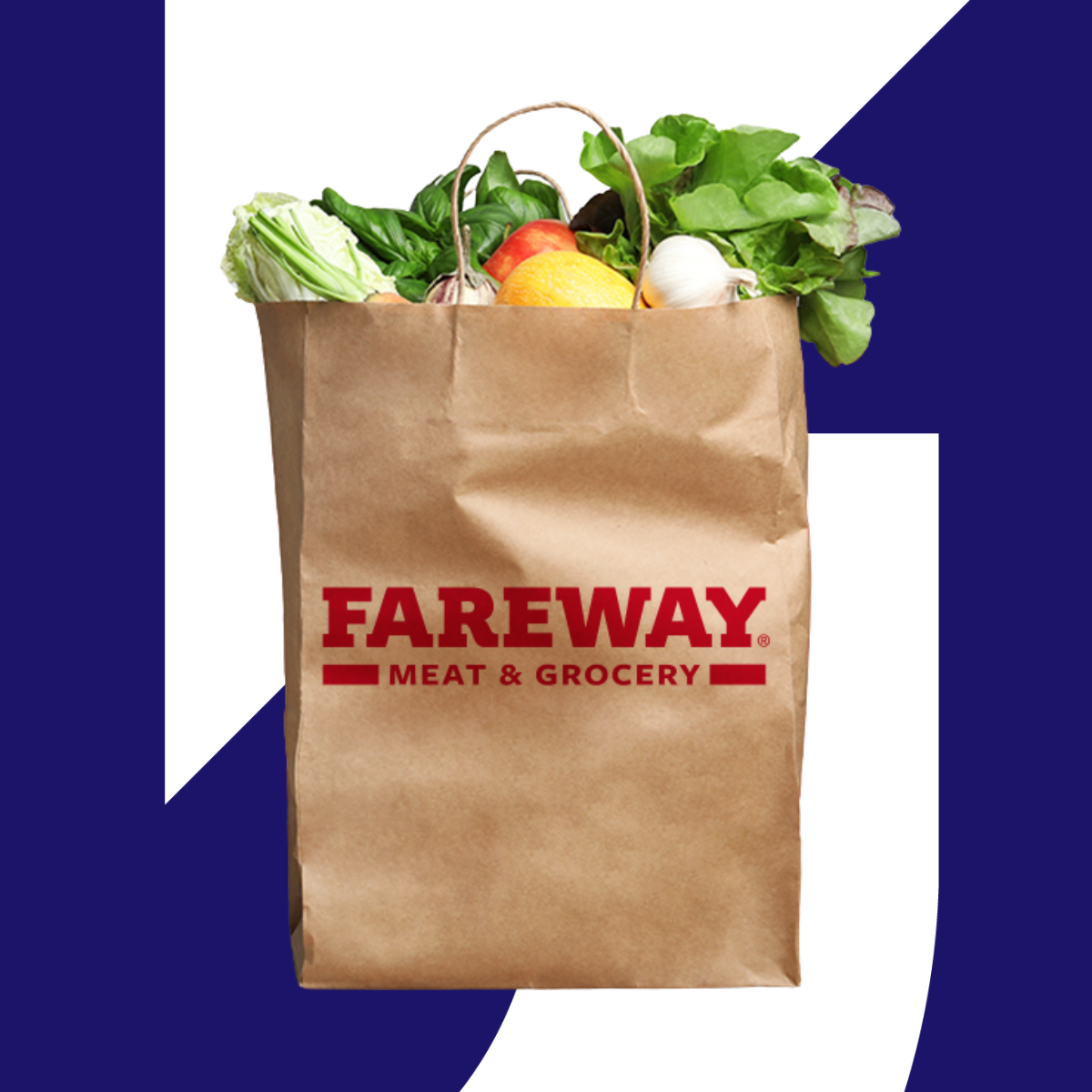Customer retention tools: Why traditional approaches aren't enough to keep today's shoppers coming back
The reality of customer retention in 2025

The Upside Team
The retail industry has shifted. Nearly 80% of today's retail customers are uncommitted, shopping across brands and formats to maximize their value. They're not just comparing prices anymore. They're weighing convenience, quality, digital experience, and personalized value against each other in real time, often while deciding where to go next.
For retailers across grocery, fuel, and restaurant industries, this shift has made customer retention one of the most important aspects of running a profitable business. You're investing in acquisition, building great experiences, and working hard to earn repeat visits. But the reality is that customers have more choices than ever, and they're exercising those choices frequently. To improve customer retention rates, it's important to understand modern consumer behavior.
The data shows what many retailers already sense:
- 31% of grocery customers who shop in a given month won't return that year.
- 50% of new grocery customers won't come back after their first month.
- Even with loyalty programs in place, 14% of loyalty members still churn each month.
This isn't necessarily a loyalty problem. It's about understanding how customers make decisions today and meeting them where they are with the right tools.
What's different about today's customers?
To build effective retention strategies, it helps to understand who you're working to retain.
Today's uncommitted customer has three defining characteristics:
- Value-seeking: They're looking for the right value for their money, and that equation includes more than just price. They're evaluating quality, convenience, and experience alongside cost.
- Digitally driven: The vast majority of uncommitted shoppers use online sources to discover brands and compare options. They have information at their fingertips, which means they're making informed decisions about where to spend.
- Opportunistic: According to Upside research, roughly half of customers decide where to shop less than two hours before they actually go. They're not planning trips days in advance; they're making decisions on the fly, which creates both a challenge and an opportunity for retailers who can reach them at the right moment.
Traditional customer retention tools were built for a different era, when customers had fewer options and less information.
Learn more about how cash back apps work and how to increase customer lifetime value on the Upside blog.
The customer retention tools you're probably already using
Most retailers have invested in one or more of these common retention strategies:
Loyalty programs
You've built a points-based or tiered system that rewards repeat purchases. It's a foundational tool, and it does meaningful work. Our data shows that customer loyalty programs reduce first-month churn from 31% to 14% for grocery customers, which is a significant improvement.
But there's still room to strengthen these programs. Even with loyalty in place, customers continue to shop around, and more than 50% of loyalty members churn within a year of sign-up. That represents an opportunity to layer additional strategies that can boost your existing loyalty investments.
Email and SMS marketing
You're sending promotions, updates, and personalized offers directly to customers' inboxes and phones. When done well, this can drive engagement. The challenge is cutting through the noise when customers are receiving dozens of promotional messages every day.
Social media advertising
You're investing in Facebook, Instagram, and other platforms to stay top-of-mind with customers. These channels offer broad reach, but it can be difficult to directly connect ad spend to in-store transactions and prove a clear return on investment.
Traditional advertising
Radio, TV, billboards, and direct mail have broad reach and can build brand awareness. The challenge is measuring impact and understanding whether your investment is driving the incremental transactions you need.
Each of these tools has value in your marketing mix. The question is whether they're optimized to address today's retention challenge: how do you influence an uncommitted customer to choose you over a competitor, repeatedly, in a way that's profitable and measurable?
Why traditional retention tools leave opportunities on the table
The limitation of traditional retention tools isn't that they don't work. It's that they were designed for a different shopping behavior.
- They engage at the wrong moment: By the time a customer reads your email or sees your social media ad, they may have already decided where to shop. The opportunity is earlier in the decision-making process, when they're actively weighing their options.
- They can't prove incrementality: Most tools measure success through clicks, impressions, or total sales. But they can't tell you whether a transaction was incremental (meaning it wouldn't have happened without the tool) or whether you would have earned that sale anyway. Without that visibility, it's difficult to optimize your marketing spend.
- They're not personalized at the individual level: A one-size-fits-all promotion might motivate a new customer, but it's more than a regular customer needs. That means you're potentially giving away margin on transactions you would have gotten with less incentive. True personalization means offering each customer exactly what they need to change their behavior.
- They work in isolation: Many retention tools operate independently, sometimes even competing with your other initiatives for credit. What works better is a solution that complements your loyalty program, your marketing campaigns, and your other retention efforts, strengthening their effectiveness rather than claiming credit for work they're already doing.
Do loyalty programs increase sales? Learn more on Upside's blog.
What effective customer retention tools actually need to do
If you're going to earn more visits from uncommitted customers, your retention strategy should accomplish four things:
1. Reach customers at the moment of decision
You want to influence behavior when customers are deciding where to shop, dine, or refuel, not days later. Being present at that moment creates the opportunity to win the transaction.
2. Offer personalized value that changes behavior
Every customer has a different threshold for what will motivate them to choose you over a competitor. New customers typically need more incentive than regulars. Infrequent visitors respond to different offers than your most loyal customers. Your retention tools should understand these nuances and act on them.
3. Prove incremental impact on every transaction
You should be able to see clearly whether your retention efforts are working. The best tools can show you which transactions were incremental, meaning they wouldn't have happened without the intervention, and which ones you would have earned anyway.
4. Protect your margin while driving volume
Profitable retention means filling your available capacity with new transactions, not subsidizing the transactions you were already going to get. Your retention tools should work within your available margin, ensuring that every promotion drives positive ROI.
How next-generation retention tools work differently
The most effective customer retention tools in 2025 operate on a different model than traditional approaches.
Instead of broad promotions, they use personalization to deliver the right offer to the right customer at the right time. Instead of charging you for impressions or clicks, they use a profit-share model where you only pay when they drive proven incremental profit. And instead of working alone, they integrate with your existing loyalty program and marketing efforts to create compounding value.
Here's what that looks like in practice:
- Personalized promotions that influence behavior: When a customer opens an app to decide where to shop, they see a personalized cash back offer from your business. That offer is calibrated specifically for them, strong enough to influence their decision, but not so large that it erodes profit unnecessarily. A new customer might see 12% cash back to motivate them to try you for the first time. A regular customer might see 5% cash back to encourage them to visit this week instead of next.
- Margin-bound offers that protect profitability: Every promotion is bound by your available margin. This ensures that you're working within your business parameters, and that every transaction driven by the platform is profitable.
- Measurement that proves incrementality: Using test-versus-control methodology, these platforms compare users to similar non-users and measure the difference in spend. This proves exactly which transactions were incremental and which ones you would have earned anyway
- Integration with existing programs: Rather than replacing your loyalty program, effective retention tools and customer retention software should enhance it. When customers stack cash back rewards on top of your existing loyalty points or credit card rewards, they get more value from shopping with you, which drives higher retention and visit frequency while preserving investments you've already made.
The retention opportunity hiding in plain sight
Here's the encouraging news: small shifts in customer behavior can drive significant returns.
For grocery retailers, earning just one additional monthly visit from uncommitted customers could represent an annual revenue bump of 84%. That's the power of retention: you don't need to completely transform shopping patterns. You just need to influence enough decisions at the margin to fill more of your available capacity.
The key is understanding that retention isn't just about preventing churn. It's about building habits, visit by visit. Our research shows that retained customers are 46 percentage points more likely than new customers to stick around after a year, and that compounds over time.
This is exactly what Upside helps retailers accomplish. By reaching customers at the moment of decision with personalized cash back offers, Upside influences those marginal choices that add up to significant revenue gains. Participating retailers across 100,000+ locations are already seeing this impact, filling empty capacity with incremental transactions that fall straight to their bottom line.
What to look for in modern retention tools
As you evaluate your customer retention strategy, consider whether your current tools can answer these questions:
- Can you reach customers at the exact moment they're deciding where to shop?
- Are your promotions personalized at the individual level instead of offering the same incentive to everyone?
- Can you prove which transactions are incremental versus transactions you would have earned anyway?
- Are your retention tools working alongside your loyalty program and other initiatives instead of competing for attention?
- Does your cost structure align with results instead of making you pay for impressions and clicks rather than proven profit?
If you're answering "no" to several of these questions, there may be an opportunity to strengthen your retention strategy with tools built for how customers shop today.
Upside was designed specifically to address each of these questions. The platform reaches 35 million consumers through the Upside app and partner network, delivering personalized promotions at the moment of decision. Every offer is calibrated to the individual customer and bound by your available margin. And with test-versus-control measurement methodology, you can see exactly which transactions are incremental, so you only pay when Upside drives proven profit.
Moving forward with confidence
Customer retention in 2025 requires a different approach than it did five years ago. Uncommitted customers aren't going away. If anything, this shopping behavior is becoming more common as consumers become more digitally savvy and value-conscious.
But this shift doesn't have to be a challenge. It can be an opportunity.
The retailers who will win are those who meet customers where they are, with personalized value delivered at the right moment. They'll layer modern retention tools on top of their existing loyalty and marketing investments to create compounding value. And they'll measure success based on incremental profit, not vanity metrics.
Upside has already delivered $2.5 billion in new, incremental profit to retailers, and that number grows every day as more businesses join the marketplace. Retailers like Schnucks, Domino's, and thousands of fuel and convenience operators are using Upside to turn uncommitted shoppers into regular customers, visit by visit.
Your customers are making decisions about where to shop right now. The question is whether you have the tools in place to influence those decisions profitably and measurably.
Ready to see how Upside can fill your available capacity with incremental profit? Request a demo to learn how our personalized marketplace drives measurable results for retailers across grocery, fuel, and restaurant industries, with proven attribution on every transaction.
Frequently asked questions
What are customer retention tools?
Customer retention tools are software platforms and strategies that help businesses encourage repeat purchases and build long-term customer relationships. These tools range from loyalty programs and email marketing to personalized promotion platforms that influence shopping decisions at the moment customers are deciding where to spend.
What is the most effective customer retention strategy?
The most effective customer retention strategy combines personalized promotions with proven measurement to drive incremental visits and build shopping habits over time. Rather than relying on a single tool, successful retailers layer complementary approaches to create compounding value that keeps customers coming back.
How do you measure customer retention ROI?
You measure customer retention ROI by tracking incremental transactions, purchases that wouldn't have happened without your retention efforts. The best measurement approach uses test-versus-control methodology to compare customers who receive retention promotions against similar customers who don't, proving exactly which sales are incremental versus sales you would have earned anyway.
How can retailers improve customer retention rates?
Retailers can improve customer retention rates by reaching customers at the moment of decision with personalized offers, integrating retention tools with existing loyalty programs, and focusing on building habits through repeat visits. The key is offering each customer the right value at the right time: strong enough to influence behavior but bound by your available margin to protect profitability.
Share this article:
The Upside team is made up of data scientists and industry experts who are passionate about delivering empowering content to our readers. With a focus on providing practical insights and meaningful perspectives, we create engaging materials across a wide range of topics. From exploring industry trends and offering expert analysis to sharing useful tips and inspiring ideas, our team works diligently to provide you with the information you need to thrive.
Request a demo
Request a demo of our platform with no obligation. Our team of industry experts will reach out to learn more about your unique business needs.















